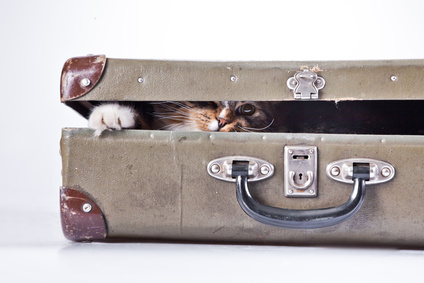For many of us, our pets are members of the family in every possible sense of the term. However, when moving with pets, extra consideration needs to be made for these furry family members to streamline the whole process. There are several things you should keep in mind when moving with pets:
Know the rules.
If you’re moving into a rental property, you need to find one that will allow your specific pets. Make sure any required deposits are paid ahead of time. Additionally, many cities require pets to be registered. Find out ahead of time is this is the case in your soon-to-be-hometown, and if so, get the necessary registration done ahead of time.
Talk to your veterinarian.
You’ll need to get complete records for all your pets that can be passed on to their new vet. If you’re moving out of state, you’ll need to make sure all vaccinations are up to date and that you have proof of such readily available in case you’re called on to present it. Your current veterinarian might also have a recommendation for a vet in your new town. If that isn’t the case, however, you’ll want to do some research ahead of time. Find a vet with positive reviews online and give them a call. You’d be amazed at how much you can learn from just a casual phone conversation!
Update your contact info on your pet’s tags.
The last thing you want is for your beloved pet to get lost, and getting lost in a strange town is even worse. Having your contact info available for whomever does find your pet is a huge step in getting him/her home. You should also have your pet micro-chipped and make sure the microchip company has your current contact information.
While traveling, use a pet carrier.
Dogs in particular are den creatures by nature, so a crate will provide a much needed sense of calm during what can be a very stressful time. A crate can also be important as it will help prevent your pet from being injured should you be forced to make a sudden stop.
Survey your home and grounds for potential hazards.
A hole in a fence should be prepared before letting your cat or dog roam the yard. Checking your lawn for any foreign objects a dog might chew on is a simple task that could save your dog’s life.
A beloved family pet is part of what turns a house into your home. By following these important steps, you can help your pet make a swift relocation into your new house and help them to view it as their home, too.


